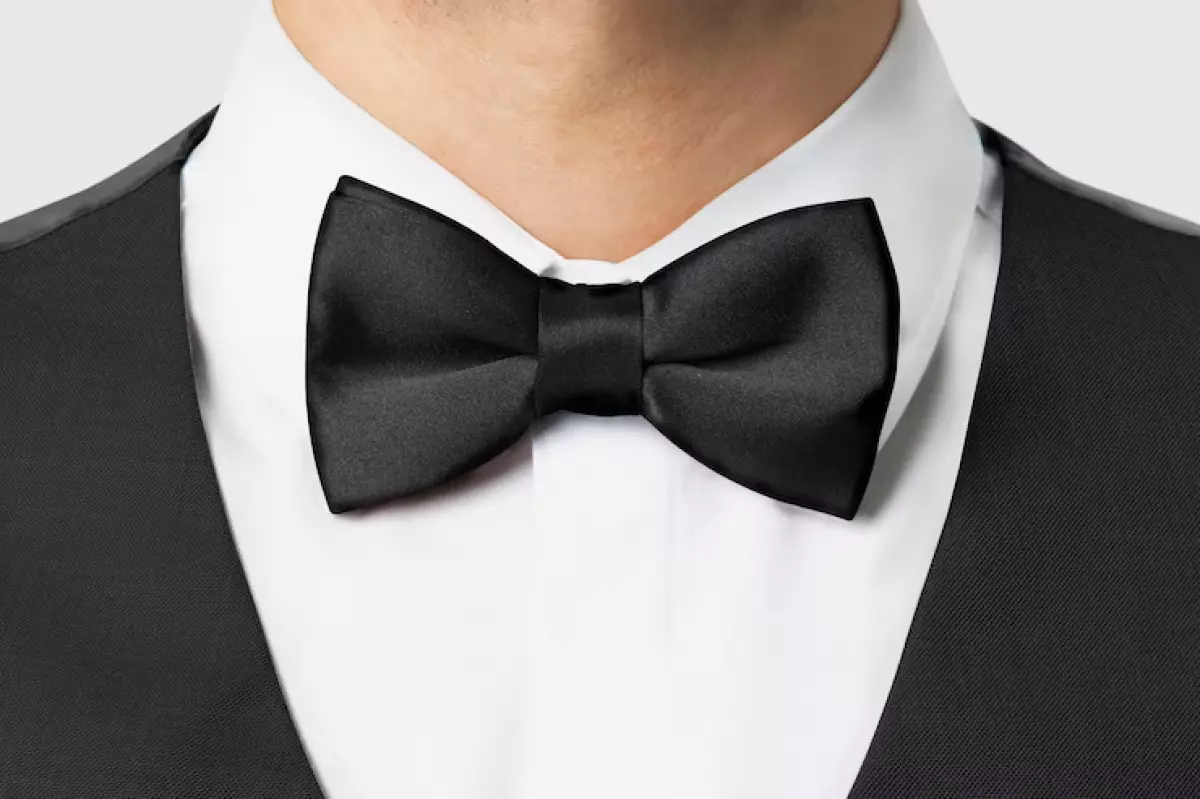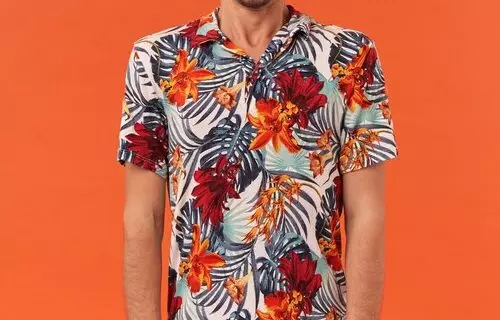Who said fashion is a woman's game? Gone are those days; even men are ready to dive into the style world. Welcome to the revolution, gentlemen, where your clothes can tell your story before you utter a word.
The canvas of men's style has broadened like never before, and it's high time to embrace the wide spectrum of sartorial possibilities. Now men's fashion is breaking stereotypes and defining individuality.
 Fashion Styles For Men
Fashion Styles For Men
Fashion is not just about looking good; it's an opportunity to embody self-expression, personal branding, and empowerment. A well-curated wardrobe can do wonders for you, from making an impactful first impression to boosting your confidence and reflecting your personality.
Whether you're a style-savvy chap who wants to explore more, our fashion guide is here to help you. It opens the realm to navigate various fashion terrains, understand their nuances, and identify what resonates with your persona.
The style journey will enrich your fashion vocabulary and empower you to cultivate a style uniquely yours.
History And Evolution Of Men's Fashion
If you peek into the rearview mirror of men's fashion history, you'll find it a vibrant tapestry, richly woven with cultural, social, and artistic influences.
It's a tale that unfolds the fashion styles of the royally adorned men of the Renaissance, through the distinguished gentlemen of the Victorian era, to the dapper rebels of the 1950s, and finally to the daring fashion explorers of today.
The initial style was defined by structured garments—breeches, waistcoats, and tailcoats that mirrored societal norms and class structures. However, the industrial revolution of the 18th and 19th centuries transformed it by introducing ready-to-wear clothes, the birth of suiting, and the arrival of the iconic bowler hat.
As we entered the 20th century, men's fashion began to shake off its formal stiffness. The Roaring Twenties saw men trading restrictive attire for comfortable suits, along with the wartime 1940s introduced utilitarian clothing.
Then came the liberating 1950s and 1960s, when style icons like Elvis Presley and James Dean broke sartorial norms, bringing the fashion of denim jeans, leather jackets, and an attitude of rebellion.
The subsequent decades have brought an explosion of different styles that include the androgynous glam of the '70s, the flashy exuberance of the '80s, the grunge and minimalism of the '90s, to the diverse, tech-enhanced fashion era of the 21st century.
Today, men's fashion celebrates and expresses individuality, diversity, and freedom. It represents that style is not one-size-fits-all but a personal statement that changes daily.
Types Of Men's Fashion Styles
When we dive into the vast ocean of men's fashion, we'll encounter a multitude of styles, each one offering its unique sartorial expression. It includes different styles for men, from the Classic Style, characterized by timeless garments, to the easygoing world of Casual Style.
1. Classic
Classic fashion is defined by simplicity and timeless elegance, a style that stands the test of time. Tailored suits, crisp shirts, and polished shoes form the heart of this style, giving it a versatile look.
It differentiates itself by adhering to established norms and standards, offering unrivaled comfort, and adding versatility to your personality.
 Fashion Styles For Men
Fashion Styles For Men
2. Preppy
Originating from the Ivy League schools of the US, the Preppy style is widely acclaimed by chinos, polo shirts, and boat shoes. It's distinctive for its clean-cut, sophisticated, and somewhat elite aesthetic look. Comfort is key in this style; breathable fabrics and relaxed fits are in demand.
3. Casual
The Casual style is all about comfort, ease, and personal expression without uttering a word. Key elements include denim jeans, comfortable t-shirts, and casual sneakers to stand out for its laid-back and approachable vibe. The casual style offers an optimal comfort level.
4. Streetwear
A blend of hip-hop culture and sportswear, Streetwear includes oversized hoodies, graphic tees, and stylish sneakers. It differentiates itself with its edgy, contemporary, and urban vibe. Its comfort level varies based on the chosen pieces.
5. Hipster
Hipster style often incorporates vintage pieces, flannel shirts, skinny jeans, and unique accessories, known for its unconventional, alternative approach to fashion. It stands out with its emphasis on individuality and rebellion against mainstream trends. Comfort varies based on personal preference.
6. Minimalist
A clean, simple, and uncluttered aesthetic with a neutral color palette defines the minimalist style. Key pieces include well-fitted tees, simple trousers, and sleek footwear. It is distinctive for its "less is more" approach and provides comfortable wear due to its simplicity.
7. Bohemian
Inspired by the free-spirited and artistic lifestyle , the Bohemian style incorporates loose, flowy clothing, patterned fabrics, and earthy tones. It is known for its relaxed, unconventional, and artistic vibe, offering high comfort.
8. Rocker
Expressive and rebellious, the Rocker style features elements like black leather jackets, band tees, and rugged boots. It differentiates itself with its edgy, bold, and often rebellious aesthetics. Comfort varies depending on individual preferences.
9. Dapper
The Dapper style radiates sophistication and class, marked by well-tailored suits, polished shoes, and eye-catching accessories. Its distinction lies in its elegance and attention to detail. While comfort may vary, its confidence often outweighs any slight discomfort.
10. Urban
The Urban style blends Streetwear with a modern twist. It incorporates trendy jeans, graphic tees, and stylish sneakers. Its distinction lies in its contemporary, versatile, and city-inspired aesthetic. Comfortability is generally high with relaxed fits and casual pieces.
These are just a few examples of the many fashion styles available for men. Each style offers a unique way to express yourself and showcase your personal taste. Explore different styles, mix and match, and create a look that is uniquely yours.
Tips And Tricks To Choose Different Styles For Men
If you are new to fashion, then it can be a daunting task to choose the right fashion style. It would be best to consider what's right for your style and the occasion you typically encounter. Here are some tips and tricks you should remember while choosing your style.
-
Assess Your Lifestyle: Consider daily situations and events. If you work in a professional environment, you may opt for a more casual yet polished look, such as dress shirts and chinos, to be ready to conquer every situation.
-
Experiment With Color: Don't be afraid to try different colored leather and suede shoes, like reds, blues, and grays. Fashion is all about experimentation and choosing your best style. You don't have to match your belt to every pair; a black belt with gray shoes or a brown belt with oxblood red works fine and does wonders.
-
Know Your Body Type: Knowing your body type is essential for your style. Understand your body shape and select styles that flatter your figure instead of mindlessly trusting the trends. For example, you may try slim-cut garments. They often work well for most body types.
-
Invest In Timeless Pieces: Focus on classic shirts, pants, and shoe styles that are fashionable and versatile and never go out of style. Mix and match these outfits for various occasions and give yourself a sophisticated look.
-
Don't Be Afraid To Accessorize: Accessories must enhance and complete your style. For instance, a quality watch is a great way to add flair to your outfit to balance functionality and style. Other accessories, like ties, cufflinks, or pocket squares, can add charm to your personality and look. So, keep experimenting.
Navigating the vast world of men's fashion can feel like a daunting expedition, but understanding different styles can transform it into a fascinating journey of self-expression and creativity. Each style we've explored has its personality, reflecting a diverse blend of culture, history, personality, and fashion trends.
Fashion is not just about looking good - it's about feeling good and showcasing your unique perspective. So, embrace your style, experiment freely, and confidently wear your chosen fashion.
Frequently Asked Questions
Q: What Are The Styles For Masculine Men?
A: Masculine styles involve strong lines, quality materials, and a classic approach. Traditional wardrobe staples like tailored suits, rugged denim jeans, and crisp button-down shirts are perfect to showcase your masculine side. Remember to accessorize your style with leather belts, timeless watches, and even a well-groomed beard to complete the look.
Q: What Is Juxtaposition Fashion?
A: Juxtaposition fashion is a creative way of combining contrasting elements to create a unique and eye-catching style. It's all about mixing and matching pieces from different fashion genres. Wear a tailored blazer with distressed jeans or pair a floral shirt with bold, geometric patterns. The key here is to embrace the unexpected and let your personality shine.
Q: Are There Different Types Of Fashion?
A: Countless types of fashion are waiting for you to explore, such as casual, formal, sporty, and Streetwear. So keep experimenting to find out which helps express your unique personality. Casual attire such as jeans and sneakers are the best choice to make an eye-catching style statement.
Q: What Are The 7 Rs Of Fashion?
A: The 7 Rs of fashion stands for a sustainable approach to consuming clothing. They are Rethink, Reduce, Reuse, Repair, Rent, Recycle, and Regenerate. By following these principles, you can help minimize your wardrobe's impact on the environment and still look incredibly stylish.
Q: What Are The 5 Elements Of Fashion?
A: The five elements of fashion are color, line, shape, texture, and pattern. Together, these create a harmonious, visually appealing outfit. Once you understand how different elements help the overall design, you can make smarter choices by combining them effectively.


















